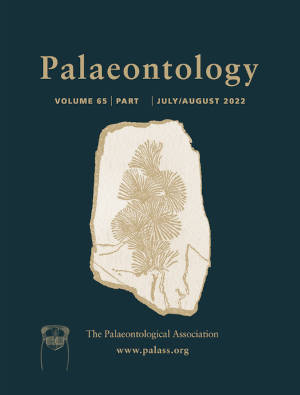Article: A coherent biogeographical framework for Old World Neogene and Pleistocene mammals
Publication: Palaeontology
Volume:
65
Part:
2
Publication Date:
2022
Article number:
e12594
Author(s):
Corentin Gibert, Axelle Zacaï, Frédéric Fluteau, Gilles Ramstein, Olivier Chavasseau, Ghislain Thiery, Antoine Souron, William Banks, Franck Guy, Doris Barboni, Pierre Sepulchre, Cécile Blondel, Gildas Merceron, and Olga Otero
Abstract
Abstract In order to understand mammalian evolution and compute a wide range of biodiversity indices, we commonly use the ‘bioregion’, a spatial division adapted to ecological and evolutionary constraints. While commonly conducted by neontologists, the establishment of bioregions in palaeontology is generally a secondary analysis, shaped on subjective time scales and areas specific to the investigated questions and groups. This heterogeneity, coupled with the scale-dependency of biodiversity indices, prevents the clear identification of macroecological and macroevolutionary trends for large taxonomic groups like extinct mammals. Here we tackle this issue by providing a coherent framework for Neogene and Pleistocene mammals of the Old World following two steps: (1) a temporal scale adapted to mammalian evolutionary history (i.e. evolutionary fauna) is defined by poly-cohort analysis; (2) bioregions are then computed for each evolutionary fauna by clustering, ordination and intermediate approaches at multiples spatial scales (i.e. continental to regional) for Eurasia and Africa. Additionally, providing a coherent framework for a wide range of mammalian datasets, our results show: (1) the synchronous emergence and fall of five mammalian evolutionary faunas identified at chronological scales varying from the epoch to the geological stage; (2) a transition from a longitudinal to a latitudinal biogeographical structuring between the Miocene and Pliocene, especially in Europe; (3) the long-term affinity of southern Asian with African faunas, in sharp contrast with the modern Palaearctic bioregion extension; and (4) the establishment of a vast Mediterranean bioregion from fragmented areas in the Late Miocene to its full extent in the Pleistocene.
